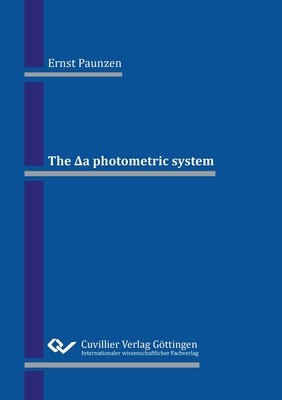
- We will send in 10–14 business days.
- Author: Ernst Pauzen
- Publisher: Cuvillier
- ISBN-10: 3736972830
- ISBN-13: 9783736972834
- Format: 14.8 x 21 x 1.3 cm, softcover
- Language: English
- SAVE -10% with code: EXTRA
Reviews
Description
This book describes the characteristics and applications of the Δa photometric system, which measures the stellar flux at around 520 nm. Since its introduction in 1976 by Hans-Michael Maitzen, the Δa system has not only been successfully applied to the classical chemically peculiar stars of the upper main sequence, but also to galactic and extragalactic star clusters. New possible applications for studying galaxies, quasars and other astrophysical objects of interest are discussed.
EXTRA 10 % discount with code: EXTRA
The promotion ends in 20d.06:53:29
The discount code is valid when purchasing from 10 €. Discounts do not stack.
- Author: Ernst Pauzen
- Publisher: Cuvillier
- ISBN-10: 3736972830
- ISBN-13: 9783736972834
- Format: 14.8 x 21 x 1.3 cm, softcover
- Language: English English
This book describes the characteristics and applications of the Δa photometric system, which measures the stellar flux at around 520 nm. Since its introduction in 1976 by Hans-Michael Maitzen, the Δa system has not only been successfully applied to the classical chemically peculiar stars of the upper main sequence, but also to galactic and extragalactic star clusters. New possible applications for studying galaxies, quasars and other astrophysical objects of interest are discussed.


Reviews